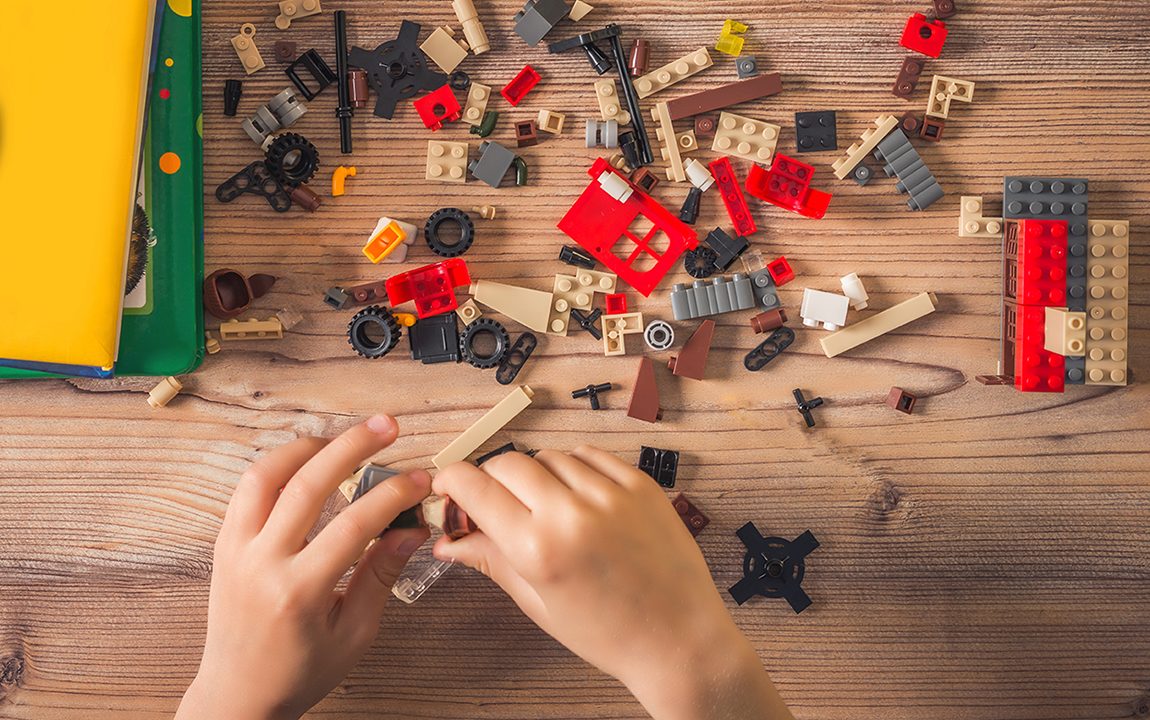
Inherent in Project Based Learning is the design thinking process that questions, opens up, builds, iterates, tests and redesigns, then starts all over again. There are many models of design thinking; it is a process that is always developing and changing. As Karl Fast states in his recent article, ‘The Fundamental Job of Design is not Great Design” it’s about integration, transformation and evolution. In other words, it’s about learning, developing and growing.
I recently tried a design thinking activity with students that would be a great way to prepare them for PBL, because it engaged them in thinking differently and critically, and allowed us to talk about what it meant. I wove the learning process underlying design thinking with parallel elements of Gold Standard PBL—and, most engaging of all, we used Legos!
Here are the stepping stones down the design path:
Step 1.
Start with the question, “How might we…?” and then fill in the blank depending on your subject matter. So, for an 8th-10th grade science class, I used, “How might we think about or design for the future of technology?”
Sounds vague, right? Yes, it is vague, and embracing the ambiguity and realizing there is a benefit to the unknown as a point of discovery is the point. It’s like the purpose of the entry event and driving question in PBL: to get students out of their comfort zone and thinking!
Step 2.
Have students construct something in groups. Think about appropriate and available design elements you can use—such as, in my case, pipe cleaners, paper clips, string and Legos. I set up 5 baskets of 100 Legos each, and gave students the following instructions:
- Form groups of 5 or 7 people.
- Individually pick out 10 pieces of any Legos.
- Pool your Legos as a group and get to work designing your idea for what may be emerging in the future of technology.
This step incorporates Gold Standard PBL’s element of “student voice and choice” and emphasis on collaboration. It also mirrors what happens in design thinking when people learn and collaborate with others while observing differences.
This stage naturally leads to quickly experimenting in different ways, strategically moving the Legos around, letting all voices be incorporated into the design process.
Quite naturally, students find insights, common and not so common ground as specific challenges, problems and questions arise. These questions are the golden nuggets of experiential learning and are at the heart of design thinking as well as PBL. Questions of, “What if …”, “How might we…”, “What about…” are all posed as ways to think differently, even if unplanned.
Step 3.
Introduce an option. I told the teams they could choose 5 more Lego pieces to incorporate into their design—an opportunity every team jumped on, now that they knew a little more about their design process and ideas. They were in fact expanding on the design, which is inherent to design thinking and reflects the process of creating a public product in Gold Standard PBL.
Step 4.
Present designed pieces/products for critique and revision. This is the design testing phase. Each group, presenting to me and peers, communicated their concept, their strategy in building out their idea, the benefit of their design and the knowledge they shared getting to that point. The feedback started with, “What I like about that is…” before critique of each Lego design, followed by pointed questions from the class.
Step 5.
Have students reflect and iterate their product, by incorporating the suggestions and opinions of others who see value in the team’s design.
Step 6.
Switch up teams and do it again. After a good amount of reflection on not only how they answered the open-ended question, but also the design process, it’s worthwhile to put Legos back, switch up teams, build something again, and reflect on the process.
This kind of activity could be used for any grade level. By clearly stating a learning outcome to achieve, the question to design for (vagueness is good as it reflects what we encounter every day), defining the parameters of the groups, the timing of the exercise, and allowing sufficient time for reflection, you’ve strategically introduced the kind of thinking and working used in PBL with the overlay of design thinking. You’ve created an exciting opportunity for your students to practice a myriad of skills starting with listening, collaboration, creativity, empathy and reflection.

